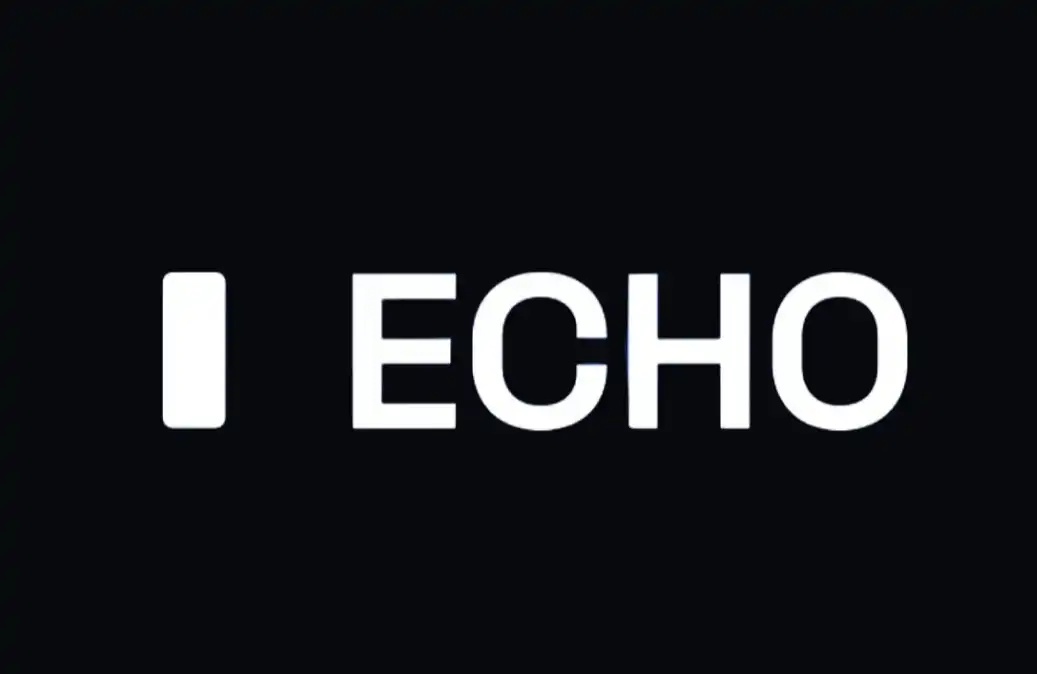Bullish IPO, Why Is the Valuation Less Than 10% of Coinbase's?

On August 12, following Coinbase, the second cryptocurrency exchange will officially debut on the New York Stock Exchange — Bullish plans to raise approximately $9.9 billion through an initial public offering.
On the surface, this is just another routine appearance of the crypto industry. The impressive performance of IPOs of companies like Circle and Figma in the past half-year, along with Coinbase's inclusion in the S&P 500, has already whetted the stock market's appetite for crypto companies.
Bullish's debut seems to continue this trend, and perhaps it may be the most extravagant one. This exchange, holding $30 billion in assets, not only received strong support from top investors such as Peter Thiel, Alan Howard, SoftBank, acquired the crypto media giant CoinDesk, firmly holding the industry's most authoritative "microphone," with its CEO Tom Farley having previously served as the NYSE Chairman.
The strong background and aura have made investors' demand for Bullish's IPO "particularly strong," prompting Bullish to increase its fundraising size from $629 million to $9.9 billion on the eve of the IPO.
However, beneath Bullish's glamorous resume lies a story significant enough to stir the memory of the crypto community: the destination of massive financing, the rift between the community and capital, and an abandoned public chain — EOS.
EOS's "evangelist," Li Xiaolai, once wrote on August 10, 2018, in his friend circle "Let's come back and look at EOS in seven years." Ironically, seven years later, the community did not witness the greatness of EOS but rather the glory of Bullish — a company unrelated to EOS.

A $4.2 Billion Betrayal
If one were to describe the relationship between Bullish and EOS in one sentence, it would probably be — former and present, mutually aware but finding it hard to sit at the same table.
After news of Bullish's secret submission of an IPO application leaked, the EOS token price surged by 17%, giving the illusion of a rekindled old flame. However, in the eyes of the EOS community, this price surge seemed more like irony. The former manipulator Block.one had already turned to embrace Bullish, leaving EOS behind — and at the expense of its decline.

The story begins in 2017. At that time, the public blockchain arena was in its golden age, where a whitepaper served as a ticket to entry, and the vision was to create the ultimate fundraising tool. Block.one launched EOS with the bold claims of "millions of TPS, zero fees," attracting global investors to flock in.
In 2018, through an ICO, it raised $4.2 billion, setting a new record in the crypto industry. EOS was then adorned with the halo of being the "Ethereum Killer."
However, the myth crumbled faster than imagined. Shortly after the mainnet launch, users discovered a profound gap between reality and the whitepaper: transfers required staking CPU and RAM, a cumbersome process with high barriers to entry; node election turned out not to be the expected "decentralized democracy" but quickly devolved into a whale and exchange voting game.
Technical flaws were just the surface; a deeper crack stemmed from the unequal distribution of resources.
Despite Block.one's pledge to allocate $1 billion to support the EOS ecosystem, out of the $4.2 billion raised, $2.2 billion ended up being used to purchase US Treasury bonds, Bitcoin, stocks, the acquisition of Silvergate (which went bankrupt in 2023), the purchase of Voice domain, and other investment endeavors.
The funds that truly flowed into the EOS developer ecosystem were embarrassingly minimal.
The final straw that broke the EOS community's patience was the emergence of Bullish in 2021. Block.one announced the launch of this new cryptocurrency exchange platform, raising a staggering $1 billion, yet it had no connection to the EOS technical system — not using the EOS chain, not supporting EOS tokens, disavowing any relationship with EOS, and not even a symbolic acknowledgment.
To the EOS community, this was a blatant betrayal: Block.one raised a huge sum leveraging EOS, then started a new venture at the opportune moment, leaving EOS behind without its original resources and spotlight.
Bullish: A $1 Billion Financing New Beginning
Born from the shattered dreams of EOS, Bullish initially received a $100 million cash injection from Block.one.
It also attracted prominent investors such as Peter Thiel, Alan Howard (investors in FTX and Polygon), as well as top-tier venture capital firms including Galaxy Digital, DCG, and SoftBank, forming a truly luxurious lineup.
This allowed Bullish to have up to $1 billion in initial capital in the early stages, far surpassing its competitor Kraken, which only raised $65 million in funding during the seed and Series A rounds.

Since 2021, Bullish's core business has revolved around its exchange. Leveraging an innovative hybrid liquidity model (a combination of CLOB and AMM), Bullish is able to provide narrow trading spreads in high liquidity environments and maintain stable market depth in low liquidity environments.
This technological innovation quickly gained favor among institutional clients, propelling Bullish to become the world's fifth-largest cryptocurrency exchange.
While steadily growing its exchange's core business, Bullish acquired the globally leading cryptocurrency media platform CoinDesk in 2023, further solidifying its industry influence. CoinDesk's monthly unique visitors reached 4.96 million in 2024.

Bullish also launched CoinDesk Indices and acquired CCData in 2024, leveraging the strengths of both in data services to help its institutional clients track digital asset performance and provide market data insights.
Additionally, Bullish established a venture capital arm—Bullish Capital. Through this business, Bullish can deploy capital into innovative crypto projects, which not only potentially bring capital returns to Bullish but also help maintain its industry leadership and achieve diversified expansion. Currently, Bullish Capital has invested in several well-known crypto projects, including Ether.fi, Babylon, Wingbits, and others.
In terms of financial performance, Bullish's current revenue source remains relatively concentrated, with spot trading revenue from its exchange accounting for 70% to 80% of total revenue.
According to its prospectus, in the first quarter of 2025, Bullish reported a net loss of $349 million, primarily attributed to a significant drop in the fair value of the company's held cryptocurrencies such as Bitcoin and Ethereum.

On the other revenue front, Coindesk's revenue saw significant growth. In the first quarter of 2025, Coindesk's subscription revenue reached $20 million, compared to $9 million in the same period of 2024, representing a growth of over 100% year-on-year.
This growth is partially attributed to the $9 million sponsorship revenue from the Consensus Hong Kong 2025 conference held in Hong Kong in February 2025.
However, compared to its main competitors Coinbase and Kraken, Bullish's revenue and profitability are somewhat inferior. Starting in 2022, Coinbase's revenue has almost always remained over 20 times that of Bullish. Additionally, Kraken's total revenue of $15 billion in 2024 far exceeded Bullish's $2.14 billion during the same period.

In terms of business data, Bullish's spot trading volume growth is quite impressive. In the first quarter of 2025, Bullish's $799 billion in trading volume even slightly surpassed Coinbase.
This phenomenon of comparable trading volume but significantly lagging revenue mainly stems from Bullish proactively lowering the trading spread.
“The strategic measure of tightening the spread has enhanced our competitive position and captured a larger market share,” according to the prospectus. In 2024, Bullish's global BTC and ETH spot trading volume market share increased by 10% and 37%, respectively, and in 2023, by 31% and 189%.
However, this strategy of expanding market share by compressing the spread is not optimistic for the future.
On one hand, as institutional investors gradually enter the market, the market is maturing, and trading is becoming more concentrated on top assets like BTC, leading to narrower volatility.
On the other hand, the introduction of ETFs further intensifies the competition among exchanges. These changes will compress the market's trading spread, thereby affecting Bullish's profitability and competitive advantage.
Facing increasingly fierce market competition, Bullish's competitive strategy is also similar to top exchanges like Coinbase—exploring a second growth curve through the derivatives market and acquisitions:
“We expect to meet the ongoing needs of stable, high-value institutional clients through expanding products, especially options products, to achieve growth. And we will continue to leverage our scale, assets, and professional expertise to acquire companies that align with our business lines.”
A $48 Billion Valuation: “Low-Key” or Hidden Agenda?
Bullish was emboldened to make significant future acquisitions, largely thanks to the landmark funding event that is now part of crypto history—the 2018 Block.one EOS ICO, which raised $4.2 billion.
Aside from allocating a large sum of this funding to secure U.S. Treasury bonds and sporadic equity investments, Block.one also made an early strategic move by acquiring 160,000 bitcoins.
This move instantly made it the world's largest holder of cryptocurrency, surpassing stablecoin giant Tether by a whopping 40,000 bitcoins.

As of the first quarter of 2025, Bullish's balance sheet also showed its substantial assets: total assets exceeding $3 billion, including 24,000 bitcoins (approximately $2.8 billion), 12,600 ethers, and $418 million in cash and stablecoins.
For comparison, in the second quarter of the same year, Coinbase held only 11,776 bitcoins, valued at approximately $1.3 billion—meaning that in terms of BTC holdings alone, Bullish was nearly twice the size of Coinbase.
This asset robustness positioned Bullish as somewhat "understated" in the face of its $48 billion IPO valuation, making it more akin to a digital asset reserve company rather than just an exchange.
At a valuation of $48 billion, the current premium at net asset value (mNAV) of this coin stock is only 1.6. This "understated valuation" ignited strong investor demand for this IPO, leading to fervent market sentiment.
On August 11, the company significantly raised its issuance plan at the last minute—the per-share price range was increased from $28-31 to $32-33, and the issuance size expanded from 20.3 million shares to 30 million shares. On August 12, the issuance price was further raised to $37.
The prospectus also stated that BlackRock and ARK Investment Management will subscribe to $200 million worth of shares at the IPO price, undoubtedly adding to the optimistic sentiment.
However, behind the enthusiasm lies another set of rules. Less than 15% of the shares are in circulation for this IPO, with the vast majority still firmly held by major shareholders and early investors. Low circulation implies scarcity, and scarcity implies the potential for a "rush to get in" on the first day, making it appealing to short-term funds.
As Senior Strategist Matt Kennedy of Renaissance Capital commented on Bullish IPO, "Bankers are more willing to leave some room for valuation, to lift off a low valuation, rather than starting with an overpriced valuation, which would decrease market enthusiasm."
However, the flip side of low liquidity is a potential time bomb of selling pressure. When the lock-up period ends, if major shareholders and early investors choose to cash out and exit, the market is highly prone to a chain reaction of increased liquidity and price decline.
A similar script has been seen too many times in the crypto market during this cycle.
It is also worth noting that this is not Bullish's first attempt to enter the capital market. Back in the peak of the 2021 crypto bull market, it had planned to go public with a valuation of $9 billion through a merger with the SPAC company Far Peak Acquisition Corporation. That time, regulatory uncertainty and market volatility dealt a double blow, leading to the plan coming to a halt in 2022.
Now, with Bitcoin once again hitting a historical high above $120,000, crypto companies like Circle have successfully tested the waters of the capital market through IPOs, and Bullish, with a nearly halved valuation and a more refined strategy, is once again challenging the NYSE.
Can this combination of "valuation suppression + liquidity squeeze + bull market timing" allow Block.one's already substantial book value to see another impressive appreciation?
However, for investors who are familiar with the EOS story, perhaps there is a more important lesson — don't love this kind of company for too long, to avoid the replay of the old dream of EOS community fate in the end.
Read the full article on Dongcha Beating's official account
Welcome to join the official BlockBeats community:
Telegram Subscription Group: https://t.me/theblockbeats
Telegram Discussion Group: https://t.me/BlockBeats_App
Official Twitter Account: https://twitter.com/BlockBeatsAsia


 Forum
Forum Finance
Finance
 Specials
Specials
 On-chain Eco
On-chain Eco
 Entry
Entry
 Podcasts
Podcasts
 Activities
Activities
 OPRR
OPRR









